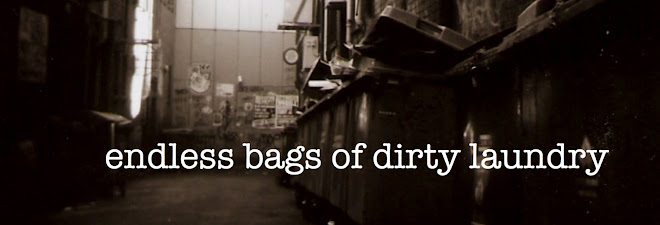
Why film?
It's a question that I get asked a
lot. And I ask it of myself even more often. It's something I've been thinking
hard about, and trying to articulate, for the longest time. The closest thing
to an answer I've ever been able to achieve is less an explanation than a
feeling. A very strong feeling that I just have no interest in taking up
digital photography. An extremely strong feeling that I am just in love with
film. But this hasn't satisfied my intense curiosity on the matter.
While buying and testing out my new
(film) camera - the most expensive one I've bought yet - the question seemed
more relevant than ever. While I don't yet have a single, definitive answer,
here I'm going to attempt to explore one of my strongest suspicions as to the
reason I continue to stubbornly snub new (digital) forms of photography.
The core of this suspicion is my very general belief that film just seems more real than digital. When I have tried to explain this in the past, I haven't been able to get much further than the logic that film is a physical medium - the image is there on the strip of negative, permanent and concrete. Digital, on the other hand, begins and ends in the virtual realm. It's made up of ones and zeros, and open to a plethora of manipulation and dishonesty within ubiquitous programs like Photoshop. Digital photography has opened the medium up to a world of effects, techniques and methodologies that allow images to be spectacularly manipulated. In many ways, this is a wonderful thing, as artists can create images that simply couldn’t be achieved before. But it also means that our default position when we see a remarkable image is to suspect (at best) or assume (at worst) that it has been digitally manipulated. From famous hoaxes (such as the 9/11 tourist photo, see that and more here) to celebrities that have been airbrushed to within an inch of their lives (there’s a good collection here), the ubiquity of Photoshop in modern media, and photography, means that photographic images can’t really be trusted. Or, as Erik Voons writes in his introduction to the ‘New Realities’ issue of Guide to Unique Photography, ‘while fully embracing digitization and accepting that the plethora of synthesised images will continue to grow, it has nonetheless become difficult (if not impossible) to make a distinction between pictures that are “real” and those that have been altered.’
It wasn’t always this way. In fact, when photography was in its infancy, it was prized for precisely the opposite.
André Bazin was one of the most
influential cinema theorists of the twentieth century. He co-founded French
cinema journal Cahiers du cinéma in
1951, which would permanently alter the direction of modern film theory (case
in point: its much-debated auteur theory is still taught in film schools
today). In 'The Ontology of the Photographic Image', Bazin posits that
photographic technology changed the face of creative representation by, for the
first time, enabling reality to be visually duplicated. While traditional art
forms had been representing reality for centuries, the photograph presented a
way to '[completely satisfy] our appetite for illusion by a mechanical
reproduction in the making of which man plays no part'. While obviously man
does play a part in the composition and the act of taking the photograph,
Bazin's point is that subjectivity ends there; unlike in, say, painting, the
image is a mechanical duplication of life rather than a hand-made
interpretation. In his words:
For the first time, between the
originating object and its reproduction there intervenes only the
instrumentality of a nonliving agent ... The personality of the photographer
enters into the proceedings only in his selection of the object to be
photographed and by way of the purpose he has in mind. Although the final
result may reflect something of his personality, this does not play the same
role as is played by the painter.
That's it! I thought. That's the difference between film and digital! That's what I love about film! This logic can surely be applied to the film vs digital debate: the extensive post-production that so often occurs in digital photography is akin to the painting in Bazin’s analogy. Film is truth; digital is a warped version - a subjective interpretation - of that truth.
But the more I thought about it, the
surer I became that, unfortunately, it is much more complicated than that.







No comments:
Post a Comment